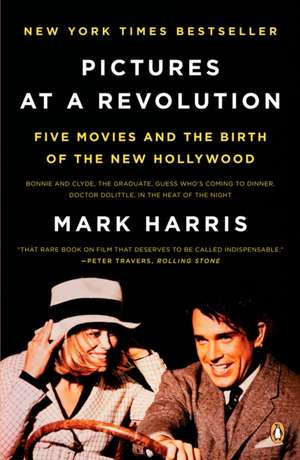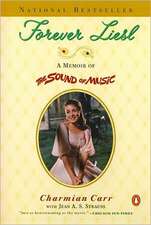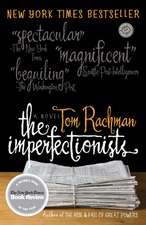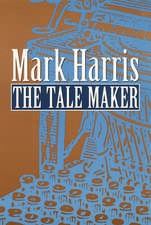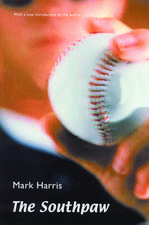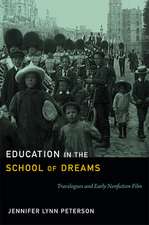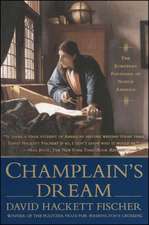Pictures at a Revolution: Five Movies and the Birth of the New Hollywood
Autor Mark Harrisen Limba Engleză Paperback – 31 ian 2009 – vârsta de la 18 ani
Vezi toate premiile Carte premiată
ALA Notable Books (2009)
The New York Times bestseller that follows the making of five films at a pivotal time in Hollywood history
In the mid-1960s, westerns, war movies, and blockbuster musicals like Mary Poppins swept the box office. The Hollywood studio system was astonishingly lucrative for the few who dominated the business. That is, until the tastes of American moviegoers radically- and unexpectedly-changed. By the Oscar ceremonies of 1968, a cultural revolution had hit Hollywood with the force of a tsunami, and films like Bonnie and Clyde, The Graduate, Guess Who's Coming to Dinner, In the Heat of the Night, and box-office bomb Doctor Doolittle signaled a change in Hollywood-and America. And as an entire industry changed and struggled, careers were suddenly made and ruined, studios grew and crumbled, and the landscape of filmmaking was altered beyond all recognition.
In the mid-1960s, westerns, war movies, and blockbuster musicals like Mary Poppins swept the box office. The Hollywood studio system was astonishingly lucrative for the few who dominated the business. That is, until the tastes of American moviegoers radically- and unexpectedly-changed. By the Oscar ceremonies of 1968, a cultural revolution had hit Hollywood with the force of a tsunami, and films like Bonnie and Clyde, The Graduate, Guess Who's Coming to Dinner, In the Heat of the Night, and box-office bomb Doctor Doolittle signaled a change in Hollywood-and America. And as an entire industry changed and struggled, careers were suddenly made and ruined, studios grew and crumbled, and the landscape of filmmaking was altered beyond all recognition.
Preț: 101.27 lei
Nou
Puncte Express: 152
Preț estimativ în valută:
19.38€ • 20.29$ • 16.03£
19.38€ • 20.29$ • 16.03£
Carte disponibilă
Livrare economică 15-29 martie
Preluare comenzi: 021 569.72.76
Specificații
ISBN-13: 9780143115038
ISBN-10: 0143115030
Pagini: 490
Ilustrații: 16-page b/w photo insert
Dimensiuni: 140 x 213 x 30 mm
Greutate: 0.45 kg
Editura: Penguin Books
ISBN-10: 0143115030
Pagini: 490
Ilustrații: 16-page b/w photo insert
Dimensiuni: 140 x 213 x 30 mm
Greutate: 0.45 kg
Editura: Penguin Books
Recenzii
"A rarity in the world of movie literature: A first-rate, broad-gauged (and deliciously readable) cultural history."
-Richard Schickel, Los Angeles Times
"A landmark new film book . . . sifts through the evidence with reportorial acumen and great care, conjuring up the social and cultural history of a lost world and drawing on sharp new interviews with many of its major players. . . . Can take its place alongside top-shelf film industry books."
-Janet Maslin, The New York Times
-Richard Schickel, Los Angeles Times
"A landmark new film book . . . sifts through the evidence with reportorial acumen and great care, conjuring up the social and cultural history of a lost world and drawing on sharp new interviews with many of its major players. . . . Can take its place alongside top-shelf film industry books."
-Janet Maslin, The New York Times
Notă biografică
From 1990 to 2006, Mark Harris worked as a writer and editor covering movies, television and books for Entertainment Weekly, where now writes the "Final Cut' back-page column. He has written about pop culture for several other magazines as well. He lives in New York City with his husband, Tony Kushner.
Extras
One afternoon in the spring of 1963, Robert Benton went to the New Yorker Theater to see François Truffaut’s Jules and Jim. It was not his first time; it may have been his tenth or twelfth. Benton, then thirty years old and the art director of Esquire magazine, was using the movie both to nurse a romantic injury—the painful end of his relationship with his girlfriend, Gloria Steinem—and to indulge a passion for European films, particularly those of the French New Wave, which was becoming something like a common language among young, smart, city-dwelling moviegoers.
Jules and Jim, with its delicate love triangle, its studied disregard for the moral and narrative strictures of Hollywood filmmaking (Truffaut himself called it “deliberately boring”), and its equal doses of hopelessness and romanticism, was a perfect choice for Benton—and it’s unlikely that he was the only one to travel that May afternoon up from midtown Manhattan to Dan Talbot’s theater on Broadway and 88th Street so he could luxuriate in one more encounter with it. The movie, Truffaut’s third, had opened in New York more than a year earlier to initial business that was only modest, but its cult was devoted, and the film was still holding on, playing one week on the Upper West Side, then a few days in the East Village on Avenue B, then a week on Bleecker Street. The deep chord of longing the picture sounded in many moviegoers was understandable—emotional ambiguity and grown-up sexuality were virtually black market items in American movies of the time. And Jules and Jim’s calculatedly casual visual aesthetic, its diffused light and gentle nods to flickering silent film imagery, held particular interest for Benton as a magazine designer who always had his eye on the next new thing, particularly when it was an unexpected synthesis of old things.
But even if Benton hadn’t happened to be so personally taken with Truffaut’s style, he would have had plenty of other places to go that day. The last couple of years had brought an almost unimaginable wealth of world cinema to the United States, starting, always, in New York City and then moving west. Federico Fellini’s La Dolce Vita—an immense exploding flashbulb of a movie—and Michelangelo Antonioni’s L’Avventura—stone-faced, elliptical, unsolvable—had arrived within weeks of each other; Antonioni’s La Notte and L’Eclisse followed quickly, and that spring, Fellini’s 8 1/2 was just weeks from opening. The success of The Magnificent Seven, the American remake of Akira Kurosawa’s Seven Samurai, had spurred the release of five more of the director’s movies—Throne of Blood, The Hidden Fortress, The Lower Depths, Yojimbo, and Sanjuro—in the previous eighteen months, and despite mostly condescending dismissals from Bosley Crowther in The New York Times, some of them were finding audiences. People were still talking about Jean-Luc Godard’s Breathless—and going to see it repeatedly—two years after its U.S. debut. The options were so rich and varied: The mysteries of Alain Resnais’s Last Year at Marienbad, the almost punitive austerity of Ingmar Bergman’s Through a Glass Darkly and Winter Light, the begrimed, rough- hewn carnality thrown onto the screen from England in The Loneliness of the Long Distance Runner and Saturday Night and Sunday Morning. If Benton hadn’t had to get back to Esquire’s offices that afternoon, where his colleague and comrade David Newman, a staff writer and editor, was waiting for him, he could have stayed at the New Yorker for the second feature, Luis Bunuel’s Viridiana, a portrait of a novice in the Catholic Church that was a long way from Audrey Hepburn in The Nun’s Story.
Whatever destination Benton had selected when he chose to sneak away from work that day (a decision that wasn’t hard, since Esquire was a place where talent could excuse many varieties of midafternoon misbehavior), it’s almost a certainty that he would not have ended up watching a Hollywood movie. In the early 1960s, the American studio film had bottomed out: Even many of its own manufacturers and purveyors felt they had dragged the medium to a creative low point in the sound era. “It wasn’t just that we were sick of the system,” recalls the director Arthur Penn. “At that point, the system was sick of itself.” And with good reason: Though a handful of movies, as ever, either transcended convention or executed it with exhilarating skill, what Hollywood was primarily invested in turning out in 1963 were dozens of war movies and westerns (generally with aging stars and increasingly threadbare and recycled plots), biblical spectaculars of great scale and diminishing returns, musicals with an ever more strident sense of nostalgia, tinny, sexually repressive romantic comedies, and huge, unseaworthy battleships like Cleopatra, The Longest Day, and the remake of Mutiny on the Bounty. Many of these films would draw audiences, and every year, at least a couple of them would get Academy Award nominations for Best Picture, in stoic recognition of their bloat and expenditure. But nobody, not even their makers, was particularly inclined to defend them as creative enterprises.
When a filmmaker who was considered serious-minded would take on an adult subject (usually smuggled into Hollywood in the respectable packaging of a Tennessee Williams or Lillian Hellman play or a novel by John O’Hara), his work would be subjected to the censorious standards of the Production Code, which had barely changed in thirty years, and would end up stripped of meaning and sense. When the results arrived on screen—a Butterfield 8 that was not quite about a prostitute, a remake of The Children’s Hour that, twenty-five years after the first time Hollywood tried to adapt it, still couldn’t refer to lesbianism, an adaptation of Elmer Gantry that had to shield timid sensibilities from the full content of a book that people had been reading since 1927—smart critics groaned, audiences applauded the actors and forgot the movies quickly, and the directors themselves expressed impotent disgust. “If you go to France nowadays… you are constantly involved in passionate discussions about the creative side of moviemaking,” said the veteran Fred Zinnemann. “Here in Hollywood we are going in circles. We have moved into a trap, a self-imposed, self-induced trap with our dependence on best- sellers, hit plays, remakes, and rehashes.”
As it turned out, there was no need for Zinnemann or anyone else to go to France; the French, and the conversations he was envying, were coming to America in the form of the movies themselves. Godard and Truffaut had both written for Cahiers du Cinéma—Truffaut’s reviews in particular were both deep appreciations and youthful, swaggeringly belligerent manifestos—and the movies they made were themselves implicit acts of film criticism. And ironically, if Zinnemann had gone to France in 1963, the conversation he would have heard was that the French New Wave was now passé, and the cinematheques he would have visited in Paris were filled with old work by Howard Hawks, Alfred Hitchcock, and underappreciated Americans like Samuel Fuller, Nicholas Ray, and Anthony Mann, whose movies had been used to lay the cornerstones of the auteur theory that was becoming central to any movie discussion in the early 1960s. Those discussions filled the air at every cocktail party. Were Bergman’s solemn, unsensual new movies a hermetic retreat from innovation or signs pointing toward a new formal rigor? Was Marienbad solvable, or was the whole point not even to try? Had Antonioni left Fellini in the dust with his defiance of narrative convention, and was he the cold-blooded moralist he seemed, perversely, to claim he was? People who cared about culture armed themselves for an evening out with an arsenal of stances, opinions, and positions that thickened the air as fast as cigarette smoke. Ten years earlier, the topic would have been literature or theater; these days, movies filled the agenda. “When La Dolce Vita and L’Avventura opened at about the same time, there were fights!” says Newman’s widow, screenwriter Leslie Newman. “There were Dolce Vita people and L’Avventura people and you were one or the other. The average American movie at that time we didn’t even go see, except for revivals. We were totally snobs! American movies meant Doris Day and Rock Hudson.”
But a hope that the studios could eventually incorporate some elements of European cinema and the French New Wave was very much on the minds of a new generation of directors trained largely in New York television production and theater—Penn, John Frankenheimer, Sidney Lumet. And the possibility that American movies could, one day soon, break the shackles of old-Hollywood thinking excited Benton and David Newman as well. At Esquire, they made a slightly Mutt-and-Jeff-ish pair, Benton low-key, precise, bespectacled, and single and Newman impulsive, hyperkinetic, unruly, and already, at twenty- five, a husband and father. Newman had arrived in New York from the University of Michigan a couple of years earlier. Despite their differences in temperament, they made an exceptionally effective professional team. “He’d ask me to design a story he was writing, I’d bring him in to write the text for something I was working on,” says Benton. Their friendship became collegial and then personal. And it was fueled, as much as anything, by their compatible tastes.
By 1963, Harold Hayes was turning Esquire into the repository of a free- swinging style of writing that eventually became known as New Journalism. It was a place where Norman Mailer could serialize his novel An American Dream, a home for Tom Wolfe, a reporter for the New York Herald Tribune who had just started publishing stories in the magazine that year, and a venue in which Gay Talese was reinventing the magazine profile with long takes on director Joshua Logan and the boxer Floyd Patterson that, in their language, their shaping of scenes, and their sense of drama, felt cinematic in precisely the way American films of the time didn’t. But beyond its status as a home for influential prose, Esquire, under Hayes, was becoming the monthly exemplification of a way of thinking about what it liked to call “today’s man”: urban, sophisticated, unshy about sexual appetite and a love of “the good life,” but also cynical, suspicious of cant, and contemptuous of mediocrity, conformity, and 1950s-style groupthink (not, however, of hyperbole). The scent of tobacco, Scotch, and heady after-hours arguments wafted off every page. And on many of those pages, style was content, which meant that a collaboration between someone with as keen and witty a sense of presentation as Benton and a writer as sharp as Newman (together, they were largely responsible for the look and tone of the magazine’s famous Dubious Achievement awards) was bound to be fruitful. Benton and Newman had jobs to do at Esquire, but also time to spare and energy to burn. In 1963, the two of them spent many afternoons and evenings mapping out their own manifesto for the magazine: a massive, sweeping piece they planned to call “The New Sentimentality” that would define by brash dictum what was in and out, arriving and over, modern and hopelessly maudlin, in pop culture. “We were sort of bad kids,” says
Benton. “Anything we could do to get attention, we did.” On afternoons when their absence might go unnoticed or be justified with a relatively straight face as “research,” they would run over to the Museum of Modern Art, where their friend Peter Bogdanovich, who was helping to curate a six-month retrospective on the career of Alfred Hitchcock, would run the films for his friends at lunchtime. “We came away babbling, excited, thoroughly converted believers,” they wrote later. “There wasn’t a day spent . . . that didn’t include at least one discussion on what he would have done.”
Newman and Benton shared other tastes—an appetite for true-crime books, particularly John Toland’s just published history of Depression-era outlaws, The Dillinger Days, and a ceaseless fascination with Godard and Truffaut (whose second movie, Shoot the Piano Player, was based on an American crime novel and had toyed knowingly with Hollywood gangster-film tropes).
Toland’s book made reference to two of the era’s minor criminals, Clyde Barrow and Bonnie Parker. Benton had grown up in the small East Texas town of Waxahachie, and their exploits—they were killed in 1934, when he was two—were more familiar to him than to Newman. “Everybody in Texas grew up with Bonnie and Clyde,” Benton says. “My father was at their funeral. You’d go to a Hallowe’en party as a kid and some boy would always be dressed as Clyde and some girl would be dressed as Bonnie. Nobody ever dressed up as Dillinger.”
Neither Benton nor Newman had ever read a screenplay, and they barely knew anyone in the movie business; a few weeks earlier, Benton had gone to a party at the comedy writer Herb Sargent’s apartment and met Warren Beatty, but neither man had then made much of an impression on the other. Nonetheless, high on everything they’d been watching andtalking about, they decided that summer that the adventures of Bonnie and Clyde would make a great movie. From the afternoon they started working on the script after a midday screening of Hitchcock’s Rope, they thought, this could be the movie that brings the French New Wave to Hollywood, “a gangster film,” says Benton, “that was about all the things they didn’t show you in a gangster film.” And if we do this right, they told each other, maybe we can get François Truffaut to direct it.
“We didn’t know how to write a screenplay,” says Benton, “so we wrote an extended treatment. We described a scene, including camera shots, and we’d write down what characters were talking about, but we didn’t put dialogue in.” Some of that writing took place in Esquire’s offices, behind closed doors, but much of it happened after hours, with Newman or Benton sketching out a scene at home, then giving it to the other in the morning. “The next day we would talk about the scene, and say, no, that’s all wrong, and if David had written it, I would take it home and rewrite it, and if I had written it, David would redo it,” Benton recalls. They would work together into the night, with Flatt and Scruggs and the Foggy Mountain Boys playing at full volume on the phonograph and becoming, in effect, the sound track to their experience of writing the movie. “We had an enormous sense of freedom—and we didn’t have skill, which was a good thing,” says Benton. “If you have enough skill, when you get to a trouble spot, you can use that skill to skirt it, which can be dangerous. We didn’t know how to do that.”
As they wrote, Benton and Newman tried to give themselves a crash course in both film technique and the gangster era. They’d return again and again to the Hitchcock retrospective, listening to what Bogdanovich, who at only twenty-four was about to publish a monograph on the director, had to say about the ways in which his movies were constructed. They would read and reread what Truffaut had written on the difference between creating shock and building suspense. Benton would leave the office to browse through used-magazine and old-book stalls on Sixth Avenue in the lower 40s, sometimes returning with treasures like the 1934 book Fugitives, written by Bonnie Parker’s mother, Emma Parker, and Clyde Barrow’s sister Nell Barrow Cowan, or vintage crime pulp magazines, including a 1945 issue of Master Detective that included photographs of Parker and Barrow and a story about how “adventure and bloodshed marked the Law’s long pursuit of the Barrows and their murderous molls.” And as a touchstone, they kept returning to a sentence about Bonnie and Clyde from The Dillinger Days: “Toland wrote, ‘They were not just outlaws, they were outcasts,’ ” says Benton. “That line was what hooked us.”
In some ways, Parker and Barrow were natural subjects for a movie. They were young—Barrow was twenty-five and Parker twenty-three when they were killed. They had a great hunger and flair for self-invention and self-promotion, taking photographs in which they posed as hardened outlaws as if they were playing dress-up and sending Bonnie’s doggerel about themselves to newspapers. And although Barrow’s record stretched back to his teens, their history together—a string of robberies that often led to murder, interspersed with periods in which they lay low—lasted only about a year and a half, ideal for the compressed narrative of a movie. Parts of their crime spree and relationship had already been appropriated for Fritz Lang’s 1937 pre-noir drama, You Only Live Once, with Henry Fonda and Sylvia Sidney, and 1958’s quickly forgotten The Bonnie Parker Story, which starred Dorothy Provine, had depicted a peculiar version of their lives that turned Clyde Barrow into “Guy Darrow.”
Benton and Newman were interested in all the historical information they could get their hands on, but not in documentary realism. Already, they knew they were going to leave out certain unromantic details: Parker’s early marriage to another man, Parker’s and Barrow’s separate stretches in jail, and the fact that Parker was severely and disfiguringly burned in a car crash almost a year before she and Barrow were killed. Their version of Bonnie and Clyde’s story would not be a history lesson, but a drama that entangled crime and passion, comedy and bloodshed. If Benton and Newman even knew of the Production Code’s rules that “crimes against the law . . . shall never be presented in such a way as to throw sympathy with the crime,” that “theft, robbery . . . etc. should not be detailed in method,” and “that throughout, the audience feels sure that evil is wrong and good is right,” hewing to those restrictions would have been the furthest thing from their minds. And the Code, which still maintained that “seduction . . . should never be more than suggested, and then only when essential” and that “suggestive . . . postures are not to be shown,” didn’t even have language, other than a general opprobrium on “sex aberration,” that could have adequately expressed the futility of their plan to include a sexual ménage à trois (the Jules and Jim influence at its most apparent) involving Bonnie, Clyde, and their strapping male getaway driver.
By November 1963, Benton and Newman were putting what they thought were the finishing touches on a seventy-five-page treatment of Bonnie and Clyde and, says Benton, “specifically writing it for Truffaut.” The constant presence of the director’s name in their bull sessions represented a combination of hubris, sky-high optimism, and a sliver of actual hope. Though neither writer was particularly well connected, Benton knew someone who knew someone who knew someone. While attending the University of Texas at Austin in the early 1950s, he had become friends with fellow undergrads Harvey Schmidt, an aspiring composer, and Tom Jones, a writer and lyricist. All three went on to serve in the army and then came to New York, where Schmidt and Benton roomed together and occasionally collaborated at Esquire and Schmidt and Jones worked on their first musical. That show, The Fantasticks, opened off Broadway in 1960 to mixed reviews but hung on with remarkable tenacity and was now starting the fourth year of its run. Jones’s wife, Elinor Wright Jones, had gotten to know and admire Benton; she had even produced a short film he had created called A Texas Romance 1909, a chapter of his family history told through the paintings of four illustrators. “Bob called me one day and said, ‘David and I want to tell you a story,’” she remembers. Benton and Newman went over to the Joneses’ Central Park West apartment, bringing with them their treatment and their yellowed issue of Master Detective.
Jones was dazzled by their enthusiasm and by their conviction that a movie based on their screenplay could bring a Nouvelle Vague aesthetic to as American a subject as Dust Bowl bank robbers. At the time, she was working as an assistant to Lewis Allen, a Broadway producer who was trying his hand at low-budget art films (that year, he had produced a movie of Genet’s The Balcony as well as Peter Brook’s adaptation of Lord of the Flies), and she was eager to start producing as well. Her younger brother, Norton Wright, then a twenty-eight-year-old production assistant, shared her ambition. “In the early 1960s, low-budget pictures were being made in New York City for $350,000, and some of them were good movies,” says Wright, who had learned the ins and outs of working with a tight schedule and minimal budget as a production manager on a number of those films—“indies,” before the term was in common use. Wright and his sister shared Benton and Newman’s reverence for the French New Wave and had accompanied Benton on some of his return visits to the New Yorker Theater. And the two writers made a good pitching team: “You kind of had the feeling that Benton had the history and the heart of it, and David, who was very funny, was the sparkplug, the live wire,” says Wright.
By the end of the meeting, it didn’t seem impossible that, if the two would-be producers got the script into the right hands, they could raise the money to make a lean, no-frills, black-and-white version of Bonnie and Clyde themselves. And they had a well-placed ally: The Joneses’ attorney was the powerful entertainment lawyer Robert Montgomery of the New York firm Paul, Weiss, Rifkind, Wharton &Garrison. Elinor Jones sent Montgomery the treatment for Bonnie and Clyde almost immediately. Montgomery agreed to send it to another of his clients, Arthur Penn. Penn got the seventy-five pages, glanced at them, turned it down on the spot, and barely gave Bonnie and Clyde another thought for two years.
Jules and Jim, with its delicate love triangle, its studied disregard for the moral and narrative strictures of Hollywood filmmaking (Truffaut himself called it “deliberately boring”), and its equal doses of hopelessness and romanticism, was a perfect choice for Benton—and it’s unlikely that he was the only one to travel that May afternoon up from midtown Manhattan to Dan Talbot’s theater on Broadway and 88th Street so he could luxuriate in one more encounter with it. The movie, Truffaut’s third, had opened in New York more than a year earlier to initial business that was only modest, but its cult was devoted, and the film was still holding on, playing one week on the Upper West Side, then a few days in the East Village on Avenue B, then a week on Bleecker Street. The deep chord of longing the picture sounded in many moviegoers was understandable—emotional ambiguity and grown-up sexuality were virtually black market items in American movies of the time. And Jules and Jim’s calculatedly casual visual aesthetic, its diffused light and gentle nods to flickering silent film imagery, held particular interest for Benton as a magazine designer who always had his eye on the next new thing, particularly when it was an unexpected synthesis of old things.
But even if Benton hadn’t happened to be so personally taken with Truffaut’s style, he would have had plenty of other places to go that day. The last couple of years had brought an almost unimaginable wealth of world cinema to the United States, starting, always, in New York City and then moving west. Federico Fellini’s La Dolce Vita—an immense exploding flashbulb of a movie—and Michelangelo Antonioni’s L’Avventura—stone-faced, elliptical, unsolvable—had arrived within weeks of each other; Antonioni’s La Notte and L’Eclisse followed quickly, and that spring, Fellini’s 8 1/2 was just weeks from opening. The success of The Magnificent Seven, the American remake of Akira Kurosawa’s Seven Samurai, had spurred the release of five more of the director’s movies—Throne of Blood, The Hidden Fortress, The Lower Depths, Yojimbo, and Sanjuro—in the previous eighteen months, and despite mostly condescending dismissals from Bosley Crowther in The New York Times, some of them were finding audiences. People were still talking about Jean-Luc Godard’s Breathless—and going to see it repeatedly—two years after its U.S. debut. The options were so rich and varied: The mysteries of Alain Resnais’s Last Year at Marienbad, the almost punitive austerity of Ingmar Bergman’s Through a Glass Darkly and Winter Light, the begrimed, rough- hewn carnality thrown onto the screen from England in The Loneliness of the Long Distance Runner and Saturday Night and Sunday Morning. If Benton hadn’t had to get back to Esquire’s offices that afternoon, where his colleague and comrade David Newman, a staff writer and editor, was waiting for him, he could have stayed at the New Yorker for the second feature, Luis Bunuel’s Viridiana, a portrait of a novice in the Catholic Church that was a long way from Audrey Hepburn in The Nun’s Story.
Whatever destination Benton had selected when he chose to sneak away from work that day (a decision that wasn’t hard, since Esquire was a place where talent could excuse many varieties of midafternoon misbehavior), it’s almost a certainty that he would not have ended up watching a Hollywood movie. In the early 1960s, the American studio film had bottomed out: Even many of its own manufacturers and purveyors felt they had dragged the medium to a creative low point in the sound era. “It wasn’t just that we were sick of the system,” recalls the director Arthur Penn. “At that point, the system was sick of itself.” And with good reason: Though a handful of movies, as ever, either transcended convention or executed it with exhilarating skill, what Hollywood was primarily invested in turning out in 1963 were dozens of war movies and westerns (generally with aging stars and increasingly threadbare and recycled plots), biblical spectaculars of great scale and diminishing returns, musicals with an ever more strident sense of nostalgia, tinny, sexually repressive romantic comedies, and huge, unseaworthy battleships like Cleopatra, The Longest Day, and the remake of Mutiny on the Bounty. Many of these films would draw audiences, and every year, at least a couple of them would get Academy Award nominations for Best Picture, in stoic recognition of their bloat and expenditure. But nobody, not even their makers, was particularly inclined to defend them as creative enterprises.
When a filmmaker who was considered serious-minded would take on an adult subject (usually smuggled into Hollywood in the respectable packaging of a Tennessee Williams or Lillian Hellman play or a novel by John O’Hara), his work would be subjected to the censorious standards of the Production Code, which had barely changed in thirty years, and would end up stripped of meaning and sense. When the results arrived on screen—a Butterfield 8 that was not quite about a prostitute, a remake of The Children’s Hour that, twenty-five years after the first time Hollywood tried to adapt it, still couldn’t refer to lesbianism, an adaptation of Elmer Gantry that had to shield timid sensibilities from the full content of a book that people had been reading since 1927—smart critics groaned, audiences applauded the actors and forgot the movies quickly, and the directors themselves expressed impotent disgust. “If you go to France nowadays… you are constantly involved in passionate discussions about the creative side of moviemaking,” said the veteran Fred Zinnemann. “Here in Hollywood we are going in circles. We have moved into a trap, a self-imposed, self-induced trap with our dependence on best- sellers, hit plays, remakes, and rehashes.”
As it turned out, there was no need for Zinnemann or anyone else to go to France; the French, and the conversations he was envying, were coming to America in the form of the movies themselves. Godard and Truffaut had both written for Cahiers du Cinéma—Truffaut’s reviews in particular were both deep appreciations and youthful, swaggeringly belligerent manifestos—and the movies they made were themselves implicit acts of film criticism. And ironically, if Zinnemann had gone to France in 1963, the conversation he would have heard was that the French New Wave was now passé, and the cinematheques he would have visited in Paris were filled with old work by Howard Hawks, Alfred Hitchcock, and underappreciated Americans like Samuel Fuller, Nicholas Ray, and Anthony Mann, whose movies had been used to lay the cornerstones of the auteur theory that was becoming central to any movie discussion in the early 1960s. Those discussions filled the air at every cocktail party. Were Bergman’s solemn, unsensual new movies a hermetic retreat from innovation or signs pointing toward a new formal rigor? Was Marienbad solvable, or was the whole point not even to try? Had Antonioni left Fellini in the dust with his defiance of narrative convention, and was he the cold-blooded moralist he seemed, perversely, to claim he was? People who cared about culture armed themselves for an evening out with an arsenal of stances, opinions, and positions that thickened the air as fast as cigarette smoke. Ten years earlier, the topic would have been literature or theater; these days, movies filled the agenda. “When La Dolce Vita and L’Avventura opened at about the same time, there were fights!” says Newman’s widow, screenwriter Leslie Newman. “There were Dolce Vita people and L’Avventura people and you were one or the other. The average American movie at that time we didn’t even go see, except for revivals. We were totally snobs! American movies meant Doris Day and Rock Hudson.”
But a hope that the studios could eventually incorporate some elements of European cinema and the French New Wave was very much on the minds of a new generation of directors trained largely in New York television production and theater—Penn, John Frankenheimer, Sidney Lumet. And the possibility that American movies could, one day soon, break the shackles of old-Hollywood thinking excited Benton and David Newman as well. At Esquire, they made a slightly Mutt-and-Jeff-ish pair, Benton low-key, precise, bespectacled, and single and Newman impulsive, hyperkinetic, unruly, and already, at twenty- five, a husband and father. Newman had arrived in New York from the University of Michigan a couple of years earlier. Despite their differences in temperament, they made an exceptionally effective professional team. “He’d ask me to design a story he was writing, I’d bring him in to write the text for something I was working on,” says Benton. Their friendship became collegial and then personal. And it was fueled, as much as anything, by their compatible tastes.
By 1963, Harold Hayes was turning Esquire into the repository of a free- swinging style of writing that eventually became known as New Journalism. It was a place where Norman Mailer could serialize his novel An American Dream, a home for Tom Wolfe, a reporter for the New York Herald Tribune who had just started publishing stories in the magazine that year, and a venue in which Gay Talese was reinventing the magazine profile with long takes on director Joshua Logan and the boxer Floyd Patterson that, in their language, their shaping of scenes, and their sense of drama, felt cinematic in precisely the way American films of the time didn’t. But beyond its status as a home for influential prose, Esquire, under Hayes, was becoming the monthly exemplification of a way of thinking about what it liked to call “today’s man”: urban, sophisticated, unshy about sexual appetite and a love of “the good life,” but also cynical, suspicious of cant, and contemptuous of mediocrity, conformity, and 1950s-style groupthink (not, however, of hyperbole). The scent of tobacco, Scotch, and heady after-hours arguments wafted off every page. And on many of those pages, style was content, which meant that a collaboration between someone with as keen and witty a sense of presentation as Benton and a writer as sharp as Newman (together, they were largely responsible for the look and tone of the magazine’s famous Dubious Achievement awards) was bound to be fruitful. Benton and Newman had jobs to do at Esquire, but also time to spare and energy to burn. In 1963, the two of them spent many afternoons and evenings mapping out their own manifesto for the magazine: a massive, sweeping piece they planned to call “The New Sentimentality” that would define by brash dictum what was in and out, arriving and over, modern and hopelessly maudlin, in pop culture. “We were sort of bad kids,” says
Benton. “Anything we could do to get attention, we did.” On afternoons when their absence might go unnoticed or be justified with a relatively straight face as “research,” they would run over to the Museum of Modern Art, where their friend Peter Bogdanovich, who was helping to curate a six-month retrospective on the career of Alfred Hitchcock, would run the films for his friends at lunchtime. “We came away babbling, excited, thoroughly converted believers,” they wrote later. “There wasn’t a day spent . . . that didn’t include at least one discussion on what he would have done.”
Newman and Benton shared other tastes—an appetite for true-crime books, particularly John Toland’s just published history of Depression-era outlaws, The Dillinger Days, and a ceaseless fascination with Godard and Truffaut (whose second movie, Shoot the Piano Player, was based on an American crime novel and had toyed knowingly with Hollywood gangster-film tropes).
Toland’s book made reference to two of the era’s minor criminals, Clyde Barrow and Bonnie Parker. Benton had grown up in the small East Texas town of Waxahachie, and their exploits—they were killed in 1934, when he was two—were more familiar to him than to Newman. “Everybody in Texas grew up with Bonnie and Clyde,” Benton says. “My father was at their funeral. You’d go to a Hallowe’en party as a kid and some boy would always be dressed as Clyde and some girl would be dressed as Bonnie. Nobody ever dressed up as Dillinger.”
Neither Benton nor Newman had ever read a screenplay, and they barely knew anyone in the movie business; a few weeks earlier, Benton had gone to a party at the comedy writer Herb Sargent’s apartment and met Warren Beatty, but neither man had then made much of an impression on the other. Nonetheless, high on everything they’d been watching andtalking about, they decided that summer that the adventures of Bonnie and Clyde would make a great movie. From the afternoon they started working on the script after a midday screening of Hitchcock’s Rope, they thought, this could be the movie that brings the French New Wave to Hollywood, “a gangster film,” says Benton, “that was about all the things they didn’t show you in a gangster film.” And if we do this right, they told each other, maybe we can get François Truffaut to direct it.
“We didn’t know how to write a screenplay,” says Benton, “so we wrote an extended treatment. We described a scene, including camera shots, and we’d write down what characters were talking about, but we didn’t put dialogue in.” Some of that writing took place in Esquire’s offices, behind closed doors, but much of it happened after hours, with Newman or Benton sketching out a scene at home, then giving it to the other in the morning. “The next day we would talk about the scene, and say, no, that’s all wrong, and if David had written it, I would take it home and rewrite it, and if I had written it, David would redo it,” Benton recalls. They would work together into the night, with Flatt and Scruggs and the Foggy Mountain Boys playing at full volume on the phonograph and becoming, in effect, the sound track to their experience of writing the movie. “We had an enormous sense of freedom—and we didn’t have skill, which was a good thing,” says Benton. “If you have enough skill, when you get to a trouble spot, you can use that skill to skirt it, which can be dangerous. We didn’t know how to do that.”
As they wrote, Benton and Newman tried to give themselves a crash course in both film technique and the gangster era. They’d return again and again to the Hitchcock retrospective, listening to what Bogdanovich, who at only twenty-four was about to publish a monograph on the director, had to say about the ways in which his movies were constructed. They would read and reread what Truffaut had written on the difference between creating shock and building suspense. Benton would leave the office to browse through used-magazine and old-book stalls on Sixth Avenue in the lower 40s, sometimes returning with treasures like the 1934 book Fugitives, written by Bonnie Parker’s mother, Emma Parker, and Clyde Barrow’s sister Nell Barrow Cowan, or vintage crime pulp magazines, including a 1945 issue of Master Detective that included photographs of Parker and Barrow and a story about how “adventure and bloodshed marked the Law’s long pursuit of the Barrows and their murderous molls.” And as a touchstone, they kept returning to a sentence about Bonnie and Clyde from The Dillinger Days: “Toland wrote, ‘They were not just outlaws, they were outcasts,’ ” says Benton. “That line was what hooked us.”
In some ways, Parker and Barrow were natural subjects for a movie. They were young—Barrow was twenty-five and Parker twenty-three when they were killed. They had a great hunger and flair for self-invention and self-promotion, taking photographs in which they posed as hardened outlaws as if they were playing dress-up and sending Bonnie’s doggerel about themselves to newspapers. And although Barrow’s record stretched back to his teens, their history together—a string of robberies that often led to murder, interspersed with periods in which they lay low—lasted only about a year and a half, ideal for the compressed narrative of a movie. Parts of their crime spree and relationship had already been appropriated for Fritz Lang’s 1937 pre-noir drama, You Only Live Once, with Henry Fonda and Sylvia Sidney, and 1958’s quickly forgotten The Bonnie Parker Story, which starred Dorothy Provine, had depicted a peculiar version of their lives that turned Clyde Barrow into “Guy Darrow.”
Benton and Newman were interested in all the historical information they could get their hands on, but not in documentary realism. Already, they knew they were going to leave out certain unromantic details: Parker’s early marriage to another man, Parker’s and Barrow’s separate stretches in jail, and the fact that Parker was severely and disfiguringly burned in a car crash almost a year before she and Barrow were killed. Their version of Bonnie and Clyde’s story would not be a history lesson, but a drama that entangled crime and passion, comedy and bloodshed. If Benton and Newman even knew of the Production Code’s rules that “crimes against the law . . . shall never be presented in such a way as to throw sympathy with the crime,” that “theft, robbery . . . etc. should not be detailed in method,” and “that throughout, the audience feels sure that evil is wrong and good is right,” hewing to those restrictions would have been the furthest thing from their minds. And the Code, which still maintained that “seduction . . . should never be more than suggested, and then only when essential” and that “suggestive . . . postures are not to be shown,” didn’t even have language, other than a general opprobrium on “sex aberration,” that could have adequately expressed the futility of their plan to include a sexual ménage à trois (the Jules and Jim influence at its most apparent) involving Bonnie, Clyde, and their strapping male getaway driver.
By November 1963, Benton and Newman were putting what they thought were the finishing touches on a seventy-five-page treatment of Bonnie and Clyde and, says Benton, “specifically writing it for Truffaut.” The constant presence of the director’s name in their bull sessions represented a combination of hubris, sky-high optimism, and a sliver of actual hope. Though neither writer was particularly well connected, Benton knew someone who knew someone who knew someone. While attending the University of Texas at Austin in the early 1950s, he had become friends with fellow undergrads Harvey Schmidt, an aspiring composer, and Tom Jones, a writer and lyricist. All three went on to serve in the army and then came to New York, where Schmidt and Benton roomed together and occasionally collaborated at Esquire and Schmidt and Jones worked on their first musical. That show, The Fantasticks, opened off Broadway in 1960 to mixed reviews but hung on with remarkable tenacity and was now starting the fourth year of its run. Jones’s wife, Elinor Wright Jones, had gotten to know and admire Benton; she had even produced a short film he had created called A Texas Romance 1909, a chapter of his family history told through the paintings of four illustrators. “Bob called me one day and said, ‘David and I want to tell you a story,’” she remembers. Benton and Newman went over to the Joneses’ Central Park West apartment, bringing with them their treatment and their yellowed issue of Master Detective.
Jones was dazzled by their enthusiasm and by their conviction that a movie based on their screenplay could bring a Nouvelle Vague aesthetic to as American a subject as Dust Bowl bank robbers. At the time, she was working as an assistant to Lewis Allen, a Broadway producer who was trying his hand at low-budget art films (that year, he had produced a movie of Genet’s The Balcony as well as Peter Brook’s adaptation of Lord of the Flies), and she was eager to start producing as well. Her younger brother, Norton Wright, then a twenty-eight-year-old production assistant, shared her ambition. “In the early 1960s, low-budget pictures were being made in New York City for $350,000, and some of them were good movies,” says Wright, who had learned the ins and outs of working with a tight schedule and minimal budget as a production manager on a number of those films—“indies,” before the term was in common use. Wright and his sister shared Benton and Newman’s reverence for the French New Wave and had accompanied Benton on some of his return visits to the New Yorker Theater. And the two writers made a good pitching team: “You kind of had the feeling that Benton had the history and the heart of it, and David, who was very funny, was the sparkplug, the live wire,” says Wright.
By the end of the meeting, it didn’t seem impossible that, if the two would-be producers got the script into the right hands, they could raise the money to make a lean, no-frills, black-and-white version of Bonnie and Clyde themselves. And they had a well-placed ally: The Joneses’ attorney was the powerful entertainment lawyer Robert Montgomery of the New York firm Paul, Weiss, Rifkind, Wharton &Garrison. Elinor Jones sent Montgomery the treatment for Bonnie and Clyde almost immediately. Montgomery agreed to send it to another of his clients, Arthur Penn. Penn got the seventy-five pages, glanced at them, turned it down on the spot, and barely gave Bonnie and Clyde another thought for two years.
Descriere
Harris examines the human drama behind the making of the five films nominated for Best Picture of 1967 and, through them, the larger story of the cultural revolution that transformed Hollywood--and America--forever.
Premii
- ALA Notable Books Winner, 2009
